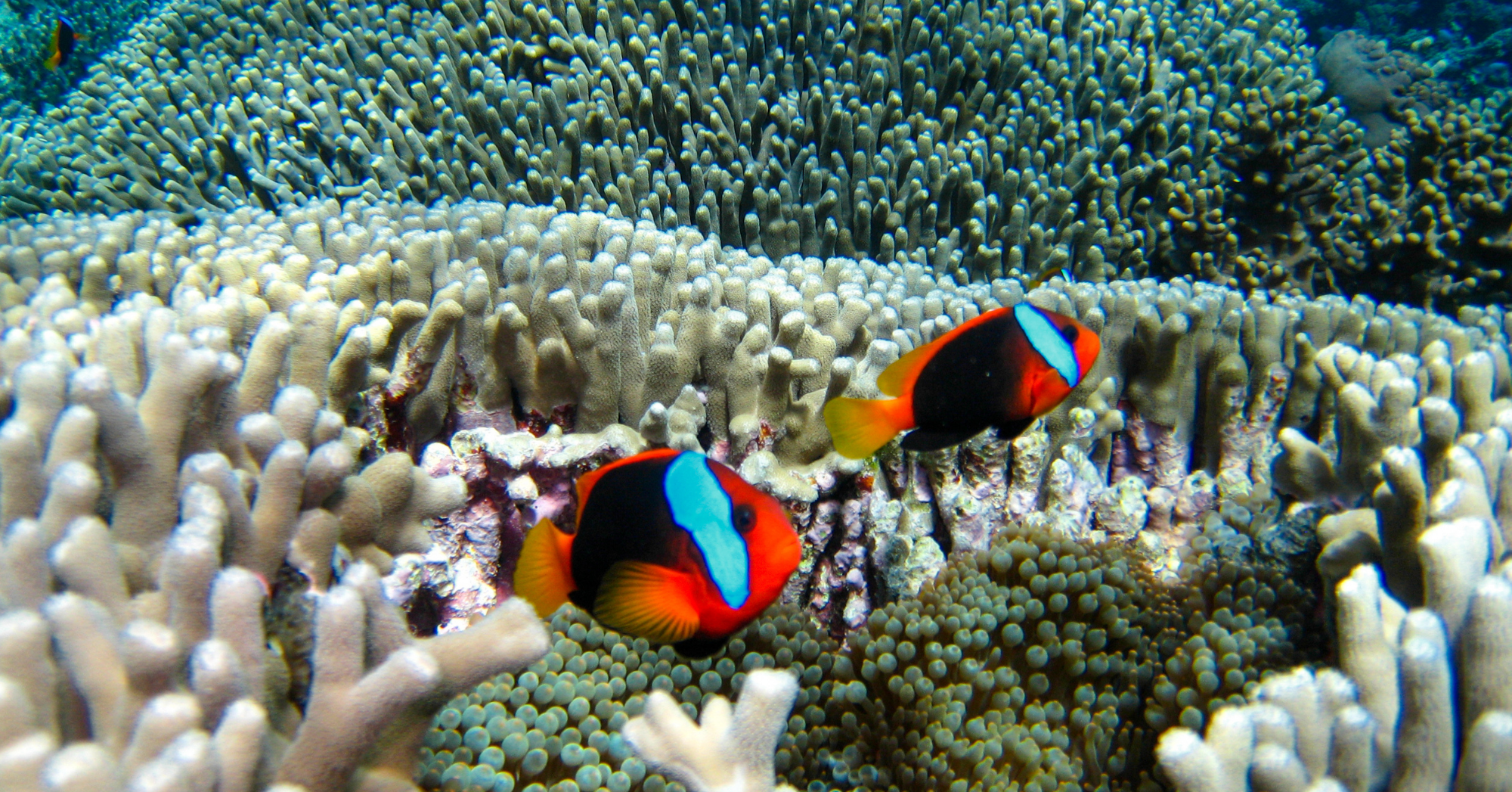Climate change is now the number one threat to our natural world heritage sites.
The International Union for Conservation of Nature (IUCN) has lowered the health status of Australia’s great barrier reef, from “significant concern” to “critical” condition – the most urgent status under the IUCN system.
Known as the world’s most extensive coral reef ecosystem, the great barrier reef was listed as a World Heritage Site by UNESCO in 1981. It has, however, lost more than half of its coral in the past three decades due to coral bleaching. The reef has recently experienced its third bout of severe coral bleaching this year, after suffering from similar events in 2016 and 2017, which damaged its health and badly affected its animal, bird and marine population.
What is coral bleaching?
As climate change warms the waters around the reef, it destroys the algae that the coral feeds on, causing the coral to turn white. While mildly or moderately bleached coral can still survive and recover, severely bleached coral has a higher mortality rate.
Furthermore, the bleaching of the coral lowers its fertility in the following spawning season. Under stress, even moderately bleached coral may forgo reproducing altogether to focus its energy on recovering from the damage. Baby corals also have a difficult time making it through their first year under pressure.
Why is this important?
Apart from the potential loss of a natural heritage site and the destruction of wildlife, the depletion of the great barrier reef is part of a bigger picture – the fight against climate change that we are currently losing.
As one of our most spectacular ecosystems, the Great Barrier Reef contains the world’s largest collection of coral reefs, with 400 types of coral, 1,500 species of fish and 4,000 types of mollusc. It is also home and habitat to many species such as the dugong (‘sea cow’) and the large green turtle, which are threatened with extinction. The reef being in critical condition poses a severe threat to these species and their habitats.
Coral reefs also protect coastlines from the damage of tropical storms, and are sources of nitrogen and other essential nutrients for marine food chains, playing an important role in carbon and nitrogen-fixing. Healthy coral reefs thus make for higher biodiversity, allowing for a larger gene pool, and therefore, more natural resources for us to tap into.
What can we do?
Some of the activities that threaten the site, such as fishing and coastal development can be tackled by the management authorities. Climate change, however, cannot be addressed at site-level, and must be fought on a much larger scale.
Whether we are visiting the reef or living on the other side of the globe, here are some ways we can help to reduce climate change and conserve the great barrier reef:
Environmentally friendly habits
When it comes to reducing carbon emissions, it’s best to start small and develop good long-term habits. These include bringing your own reusable bags, bottles, cups and straws, as well as reducing food, water and electricity wastage.
Even something as simple as switching the lights off when you leave the room can go a long way in terms of conserving the environment.
Eco-tourism
Tourism is what keeps the Great Barrier Reef in operation. All visitors are required to pay an Environmental Management Charge, which funds its day-to-day conservation.
However, do remember to be a responsible tourist. Avoid straying from the designated paths as this can result in damaging endangered plants and cause additional erosion. The most eco-friendly way to visit the reef is to join a group tour, which not only allows you to learn more about the reef from the local guide but also reduces carbon emissions.
The Outlook
From shrinking glaciers to increasingly frequent and severe fires and droughts, the damage to the Great Barrier Reef just adds on to the list of natural heritage damaged by climate change this year. The average global temperature is already 1C hotter than in pre-industrial times, and the outlook is grim for the corals, which take up to 10 years to recover from bleaching.
In the words of the IUCN’s director-general, Bruno Oberle, we owe it to future generations to protect the world’s “most precious places”. A spokesman of Australia’s federal environment minister notes that Australia is “committed to playing its role in a global response to climate change, investing unprecedented amounts protecting the reef” and supporting world heritage places.
Hope lies as long as we still have reefs. But in order for the Great Barrier Reef to have a future, attitudes to the environment need to change immediately, both internationally and individually.
Join the conversations on THG’s Facebook and Instagram, and get the latest updates via Telegram.




























